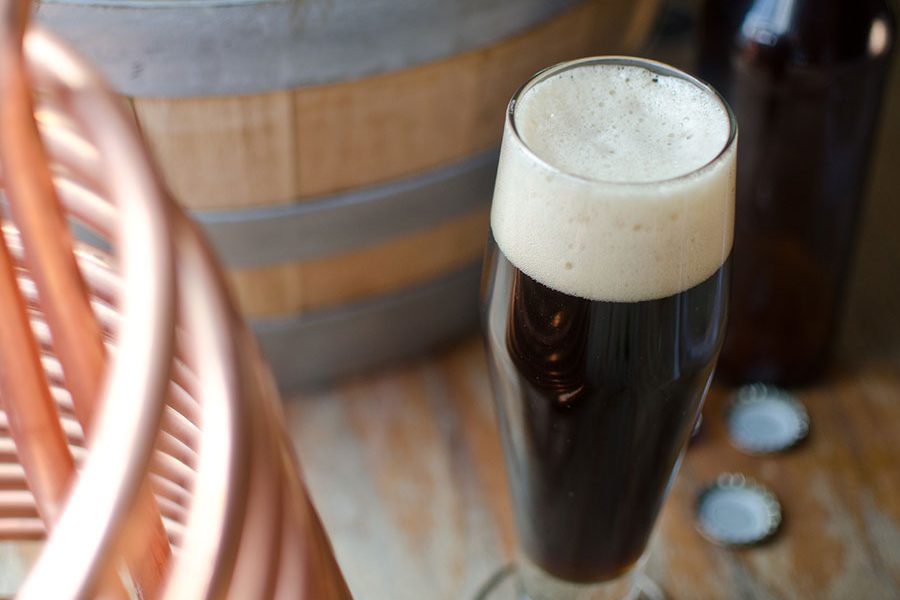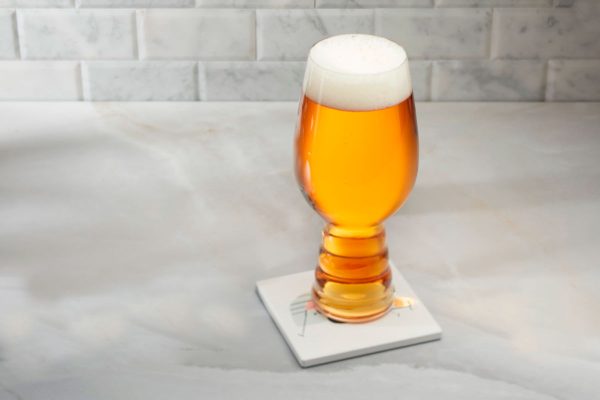
The following beer recipe is featured in the January/February 2016 issue of Zymurgy magazine. Access this issue along with the archives with Zymurgy Online!
This strong, dark wheat beer recipe is sure to warm up your toes and your taste buds on a crisp night!
All quantities and specifications in the recipe are based on a nominal system extract efficiency of only 55% and a target original gravity of 24°P (1.101 SG). Your homebrew setup may perform better or worse with this substantial grain bill, so adjust quantities as needed for your expected efficiency.
The following beer recipe is featured in the January/February 2016 issue of Zymurgy magazine. Access this issue along with the archives with Zymurgy Online!
This strong, dark wheat beer recipe is sure to warm up your toes and your taste buds on a crisp night!
All quantities and specifications in the recipe are based on a nominal system extract efficiency of only 55% and a target original gravity of 24°P (1.101 SG). Your homebrew setup may perform better or worse with this substantial grain bill, so adjust quantities as needed for your expected efficiency.
Ingredients:
- MALTS
- 9.28 lb. (4.21 kg) Weyermann® Barke® Pilsner Malt (46.5%)
- 5.39 lb. (2.44 kg) Weyermann® Pale Wheat Malt (27%)
- 3.0 lb. (1.36 kg) Weyermann® Dark Wheat Malt (15%)
- 1.5 lb. (680 g) Weyermann® Carawheat® Malt (7.5%)
- 0.6 lb. (272 g) Weyermann® Acidulated Malt (3%)
- 0.2 lb. (90 g) Weyermann® Roasted Chocolate Wheat Malt (1%)
- 1.6 lb. (723 g) rice hulls
- HOPS
- 0.5 oz. (14 g) Herkules, 14.5% a.a., 60 min
- 0.3 oz. (7 g) Saphir, 3.25% a.a., 10 min
- 0.8 oz. (21 g) Saphir, 3.25% a.a., 5 min
- YEAST
- Fermentis WB-06 or Fermentis Safbrew Abbaye
Specifications:
Yield: 5 US gallons (19 L)
Original Gravity: 1.101
Final Gravity: 1.018-1.020
ABV: 10.20%
IBU: 35
SRM: 20
Directions:
Dough in at approximately 113°F (45°C) for a 30-minute hydration and beta-glucanase rest. To mitigate subsequent lautering problems, it is also advisable to add about 10% of the dry malt weight in rice hulls at dough-in. After the cytolytic rest, infuse the mash with hot brewing liquor to raise the temperature to 122°F (50°C) for a proteolytic rest of 30 minutes at the peak-performance temperature of protease. Next, raise the mash to 149°F (65°C), the peak-performance temperature of beta amylase. This ensures the production of plenty of fermentables, and thus of alcohol. Allow 30 minutes for this diastatic rest. Repeat the temperature rise a final time to reach the alpha amylase peak temperature of 162°F (72°C). Rest the mash again, this time for 15 minutes, to convert the remaining starches into unfermentable dextrins for extra body in the finished beer. The large grain bill, in conjunction with the many hot-water infusions, is also likely to fill the mash tun to the limit of its capacity. Recirculate the wort thoroughly for perhaps 30 minutes. Then sparge and lauter simultaneously. Use the hot sparge liquor to raise the grain bed temperature to the mash-out temperature of 170°F (77°C). The run-off is likely to be slow! Stop sparging as soon as the kettle gravity is about 1.086 (20.8°P), assuming a 10% evaporation rate during a 90-minute kettle boil. In some mash tun configurations, because of aspect ratios and false-bottom designs, a kettle gravity of 1.086 may not be possible to achieve. In this case, simply sparge until the kettle is full. Then extend the boil until the net kettle gravity of 24°P is reached through evaporation. When weighing out the hop additions, adjust quantities to the projected actual net kettle volume. Boil for at least 90 minutes (or longer if the original gravity at the start of the boil is an issue). Add bittering hops 60 minutes before the anticipated shutdown time. Add flavor hops with 10 minutes of boil time remaining. Add aroma hops 5 minutes before shutdown. Whirlpool and chill. Pitch about twice as much yeast as you normally would for a “regular” brew and aerate well. In our experimental batch, we used 1.5 oz./5 gal. (44 g/19 L) of dried yeast. Primary ferment the brew at the middle of the preferred temperature range of the selected yeast for a total of 3 weeks. At the end of primary fermentation, rack the brew into a clean tank for 7–8 days of secondary fermentation. Prime and bottle the brew. Alternatively, rack the brew into a keg and let it mature for 2 weeks under pressure. Finally, adjust carbonation in the keg to 3.3 to 4.5 volumes (6.6 to 9 g/L) of CO2 before dispensing it unfiltered from the keg.





Share Post